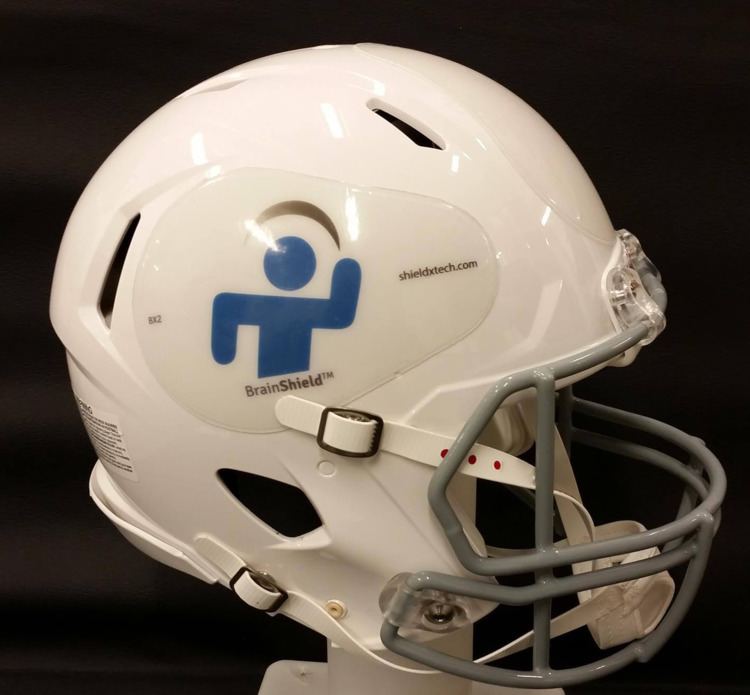Products Sports equipment | ||
 | ||
Headquarters | ||
Shield-X Technology Inc. is a developer and manufacturer of impact-diverting technology. Shield-X's decal, formerly known as BrainShield, is designed to enhance helmet performance in contact sports and activities where traumatic brain injury (TBI) such as concussions occur, including American Football, Ice Hockey, and Cycling.
Contents
The Shield-X decal, during angled impacts, significantly reduces rotational acceleration caused by friction. Rotational Forces are thought to be the major component in concussion and its severity. It is designed to look like a conventional helmet decal.
Shield-X membrane
The Shield-X membrane, initially named "BrainShield", was developed through 6 years of research and development at Simon Fraser University's Head Injury Prevention Lab. A spin-off company, named Shield-X Technology Inc. was formed to commercialize the technology.
Currently, the majority of available helmet designs are made and tested only to protect the head against direct radial impacts, which cause a linear acceleration of the brain. However, a helmet almost always impacts an obstacle obliquely (at an angle) causing injury due to both linear and rotational acceleration of the brain. The brain tissue is six orders of magnitude or 1,000,000 times more sensitive to shear forces than to compression forces.
Through standard oblique drop tests of American football, ice hockey, bicycle and motorcycle helmets using a standard human headform, it was found that reducing the frictional force can significantly reduce the rotational acceleration experienced by the headform. BrainShield was first tested during the 2014 season of Simon Fraser University's Clan Football Team. "According to the coach (Jacques Chapdelaine), the number of concussions dropped from 14 cases in 2013 to only four cases in 2014." BrainShield was brought into commercial use in October 2015 after being adopted by the football teams of Handsworth Secondary School and Vernon Secondary School.
Technology
Shield-X Technology claims the technology serves the purpose of a conventional decal (display a logo) while also including the function of an 'Impact Diverting Decal'. An 'Impact Diverting Decal' functions by reducing the magnitude of friction force applied on a helmet during an angular impact by reducing the coefficient of friction. The frictional force acts tangentially to the curvature of a helmet and is distal to the center of mass of the mass system (defined by the helmet, skull and brain) by a radius r. This results in a moment or torque around the center of mass and a rotational acceleration. This is shown in the equation below:
By reducing the magnitude of friction force F, torque is reduced as well as rotational acceleration of the brain. Rotational acceleration of the brain can apply shear force on brain tissue which is one of the major factors in head injuries such as concussions. The mechanism also allows the impact zone to slide along the side of a helmet. This enables the helmet to perform better by spreading the compression force. BrainShield is 1 mm or 3/64 of an inch thick and is applied to the outside of a helmet. BrainShield is composed of four micro-engineered layers; aerospace-grade film, a micro-layer of non-toxic medium, a highly conformable film and a solvent-free high strength adhesive.
Patent
The patent for BrainShield has a filing date of June 29, 2012 with a priority date of June 30, 2011.
